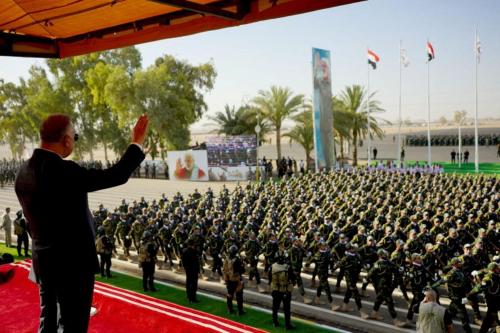How can anyone possibly argue that President Obama’s plan to have all operational U.S. military forces out of Afghanistan by the end of his presidency is a mistake? By then, Obama will have presided over eight years of military engagement there, on top of President Bush’s 7½. The effort will be far and away the United States’ longest war, whether one defines the endpoint as December’s termination of NATO’s combat operation or as the 2016 completion of the follow-on mission that will begin immediately thereafter.
The problem with this way of thinking is in the premise. We should not think about Afghanistan, at this point, as a war to end but as a partnership to preserve. For that large majority of Americans tired of this war, and uninterested in further nation-building in the Hindu Kush, the best motivator might not be the modest help in air power or intelligence that Afghan forces — already doing 95 percent of the fighting and dying in defense of their country — might need after 2016. Rather, the best argument is a more nationalistic one about U.S. national security. Without bases in Afghanistan, from where will we fly drones or stage commando raids to monitor, target and occasionally kill any al-Qaeda forces that take sanctuary in eastern Afghanistan or western Pakistan?
Talk of U.S.-Afghan partnership may sound bizarre to many American ears. To be sure, it has been an asymmetric partnership to date, with the United States and its allies pumping in billions of dollars, suffering thousands of fatalities and often being rewarded with seeming insolence from Afghan President Hamid Karzai, as well as a culture of corruption within Afghanistan and an enduring resilience from the Taliban.
But we have been here before. The best analogy may be Korea. After three years of frustrating conflict in the early 1950s, we secured a mediocre outcome in the form of a cease-fire that left the North Korean regime intact. And our partner in the effort was a highly corrupt, nondemocratic South Korean state that did not hold elections until the 1980s. By comparison, for all its flaws, Afghanistan is a better polity, with an electoral process underway that by later this summer will replace Karzai with a new leader in the country’s first-ever peaceful transfer of power via the ballot box. The two possible winners, Abdullah Abdullah and Ashraf Ghani, are both superior in integrity and competence to most early leaders of the Republic of Korea.
Yet for all of South Korea’s flaws, in 1953 we did not think of an exit strategy as the key metric of success. U.S. national security was the crucial goal, and U.S. forces settled down to a long, patient, generally nonviolent mission to attain this objective. Initially, we deployed more than 50,000 troops, and gradually reduced that to around 40,000 in the latter Cold War decades. The figure is just under 30,000 today.
In Afghanistan, thankfully, no one is clamoring for a force totaling anything close to these numbers. For all the Taliban’s resilience, it is much weaker than the North Korean regime ever was, and any al-Qaeda targets that develop in years to come will likely be modest in size and number. But as Obama rightly observed in his West Point speech last month, terrorism still represents the most acute threat to U.S. security. While al-Qaeda affiliates in places such as Syria, Iraq, Yemen and Nigeria are serious concerns, the terrorist syndicate’s potential to use sanctuaries in South Asia remains considerable. Affiliates such as the Haqqani network in North Waziristan (and perhaps also the Pakistani group Lashkar-e-Taiba with its ambitions of provoking Indo-Pakistani war) remain serious worries.
Against this threat, there is no alternative but to have bases in eastern and southern Afghanistan — certainly at least one, ideally two or three. These facilities can be located within 50 to 200 miles of the locations we need to monitor, within practical operational range of modern unmanned systems. The plausible alternatives are not realistic at all — to operate manned or unmanned aircraft from carriers in the Indian Ocean, more than 500 miles away. For all our successes against al-Qaeda in recent years and the associated decline in the recent rate of drone strikes, there is no indication that this threat will simply disappear in 2016 to suit Obama’s desire to have ended two wars on his watch in the White House.
Yes, retaining some 3,000 U.S. personnel in Afghanistan for five, 10 or even 20 years after 2016 could cost us some $5 billion a year and occasionally involve U.S. casualties. But that’s life in the age of terror. And compared with our recent mission costs of more than $100 billion a year and hundreds of fatalities, or the overall defense budget exceeding $500 billion annually, it is a bearable price compared with the possibility of al-Qaeda again mounting an attack from a South Asian sanctuary against the United States.
This opinion originally appeared in The Washington Post.



Commentary
Op-edU.S. Should Preserve Its Partnership with Afghanistan
June 8, 2014